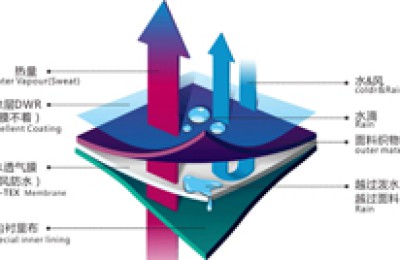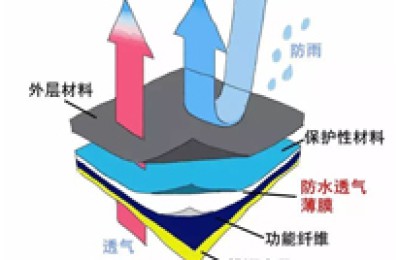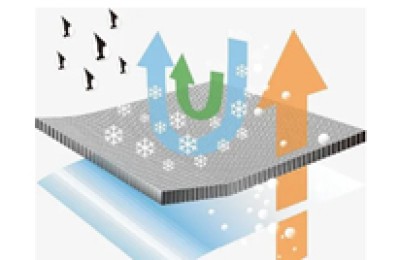Where will the Zhongda Textile and Garment Business District go? Provincial Department of Industry and Information Technology: Accelerate the introduction of comprehensive solutions
“National textiles look to Guangdong, and Guangdong textiles look to medium-sized enterprises.” The textile and garment industry is a traditional pillar industry and an important livelihood industry in Guangdong Province. As the relevant departments of Guangzhou Haizhu District and Qingyuan City signed the “Cooperation Framework Agreement on Orderly Transfer of Industrial Gradient”, in the past six months, the production, processing and manufacturing industry of Zhongda Textile and Garment Business District has been accelerating the transfer, taking root in Kangle and Lujiang Districts. Where should multiple garment factories go from here? Can Qingyuan, which is 80 kilometers away, be able to build another medium-sized textile business district? On May 23, Wu Dongwen, deputy director of the Guangdong Provincial Department of Industry and Information Technology, said when he launched the “Guangdong People’s Voice Hotline” that the Provincial Department of Industry and Information Technology will work with various functional departments to provide guidance on industry orientation and industrial policies to promote textile The garment industry is being transferred and upgraded.
●Current situation
Relocated to Guangqing Textile Industrial Park
Garment factory owners and workers face many problems
A reporter from Xinkuaibao learned from the program that this year, Haizhu District, Guangzhou City proposed to completely demolish illegal construction in Kanglu area. So far, nearly 30,000 square meters of illegal construction have been demolished. As the relevant departments of Haizhu District and Qingyuan City in Guangzhou signed the “Cooperation Framework Agreement on Orderly Transfer of Industrial Gradient”, Qingyuan became the main position to undertake the transfer. However, unlike the small workshops and garment factories in Kanglu District, Guangqing’s textile and garment industry The park plans to build spacious and bright modern factories. Most of the companies that have settled in the industrial park are medium-sized or above textile and garment enterprises. For most of the bosses and workers of the garment factories in Kanglu area, relocating to Guangqing Textile and Garment Industrial Park , there are many problems faced.
For garment factory owners, the Guangqing Textile and Garment Industrial Park has not yet formed a complete industrial chain and lacks orders and workers. Small-scale garment factories rely on meager profits to maintain operations and cannot bear the costs and risks of relocation. For workers in Kanglu area, they are accustomed to the flexible and free employment model and do not want to become permanent workers on the industrial park assembly line. Difficulty in recruiting workers has also become a problem encountered by Guangqing Textile and Garment Industrial Park. Very few workers who come from Kanglu area are willing to stay.
●Policy
Provide industrial orientation and industrial policy guidance
Accelerate the introduction of comprehensive solutions
At present, Kanglu area is dominated by small and micro textile enterprises, with more than 7,000 garment factories gathered together. Chen Weiguo, director of the Consumer Goods Industry Division of the Guangdong Provincial Department of Industry and Information Technology, said that the textile and clothing industry is also an important part of the modern light industry textileindustrial cluster. The modern light industry textile industry cluster is One of the 20 strategic pillar industry clusters created by Guangdong Province. Previously, the Provincial Party Committee and the Provincial Government have issued “Several Policies on Promoting the Orderly Transfer of Industries and Promoting Coordinated Regional Development”, and the Guangdong Provincial Department of Industry and Information Technology has also issued “On Further Promoting HighQuality in the Textile and Apparel Industry Development Implementation Opinions” guide enterprises to follow the high-quality development path of “six modernizations and three places”. The “six modernizations” are “fashionable, high-end, branded, and intelligent. , low-carbonization and internationalization”, the “three places” are to build Guangdong into a “headquarters economic gathering place, a source of creative design, and a new highland for service trade exhibitions”.
In April this year, the “Outline Development Plan for the Zhongda Textile Business District” was officially released. The plan proposed that the Zhongda Textile Business District will be based on the traditional business foundation, leverage Pazhou’s digital technology and the advantages of industry, academia and research in universities to explore the development of industries. We will further transform and upgrade into CUHK Digital Intelligence Fashion Innovation Port through innovative paths such as globalization, branding and consumption format activation, and create an international textile fashion with global fashion voice and influence. business district. At the same time, the Zhongda Textile Business District will also focus on building five major areas in the future: a fashion design pioneer area, an industry-university-research intelligent manufacturing area, a fashion industry service area, a fashion consumption experience area, and a digital fashion exhibition and trade area.
Wu Dongwen, deputy director of the Guangdong Provincial Department of Industry and Information Technology, said that in response to the relocation of the textile industry in Haizhu District, the Provincial Party Committee and the Provincial Government have led Guangzhou Haizhu District, Qingyuan Government and other relevant functional departments to set up a research team to investigate Kanglu in Haizhu District A comprehensive survey will be conducted on issues such as the manufacturing ecology of the area, the development of small, medium and micro enterprises, and even the transformation and upgrading of the traditional textile industry. The Provincial Department of Industry and Information Technology will work with various functional departments to provide guidance on industry orientation and industrial policies, and accelerate the introduction of comprehensive solutions. Give small and medium-sized enterprises an explanation.
Next stop, digital transformation
Cooperate with financial institutions to provide subsidies for small and medium-sized enterprises
To promote the high-quality development of the textile and apparel industry, digital transformation is the only way to go. As a major textile and clothing productionexportprovince, tens of thousands of traditional small and medium-sized garment enterprises have also reached the crossroads of transformation. Compared with large and powerful enterprises, small and medium-sized garment enterprises often have more concerns when entering digitalization. The owners of small and medium-sized clothing companies care more about survival issues rather than digital transformation.
The “Guidelines for the Digital Transformation of the Textile and Garment Industry in Guangdong Province” issued this year by the Guangdong Provincial Department of Industry and Information Technology put forward the expected goals for the digital transformation of textile and garment enterprises. By 2025, Guangdong…��The digital transformation and application level of the textile and apparel industry has reached a new level, realizing quality changes, efficiency changes, and power changes for the majority of small and medium-sized enterprises. The level of integration of informatization and informatization in the entire industry has reached more than 60%, and the level of enterprises above designated size has reached more than 70%, and a number of 5G fully connected factories, intelligent manufacturing demonstration parks and demonstration factories and excellent applications have been cultivated Scenes.
Focusing on the financial issues that small and medium-sized enterprises are concerned about during their digital transformation, Yi Xianhui, director of the Industrial Internet Division of the Guangdong Provincial Department of Industry and Information Technology, said, “We work together to solve problems for small and medium-sized enterprises from four aspects: enterprises contribute a little, and technology providers If the price is lowered, the government will supplement it and provide subsidies for small and medium-sized enterprises. In addition, it will link up with financial institutions to allow financial institutions to serve the digital transformation of small and medium-sized enterprises.”
AAAfefgehfjgffjhggjgjyuy
Disclaimer:
Disclaimer: Some of the texts, pictures, audios, and videos of some articles published on this site are from the Internet and do not represent the views of this site. The copyrights belong to the original authors. If you find that the information reproduced on this website infringes upon your rights and interests, please contact us and we will change or delete it as soon as possible.
AA






